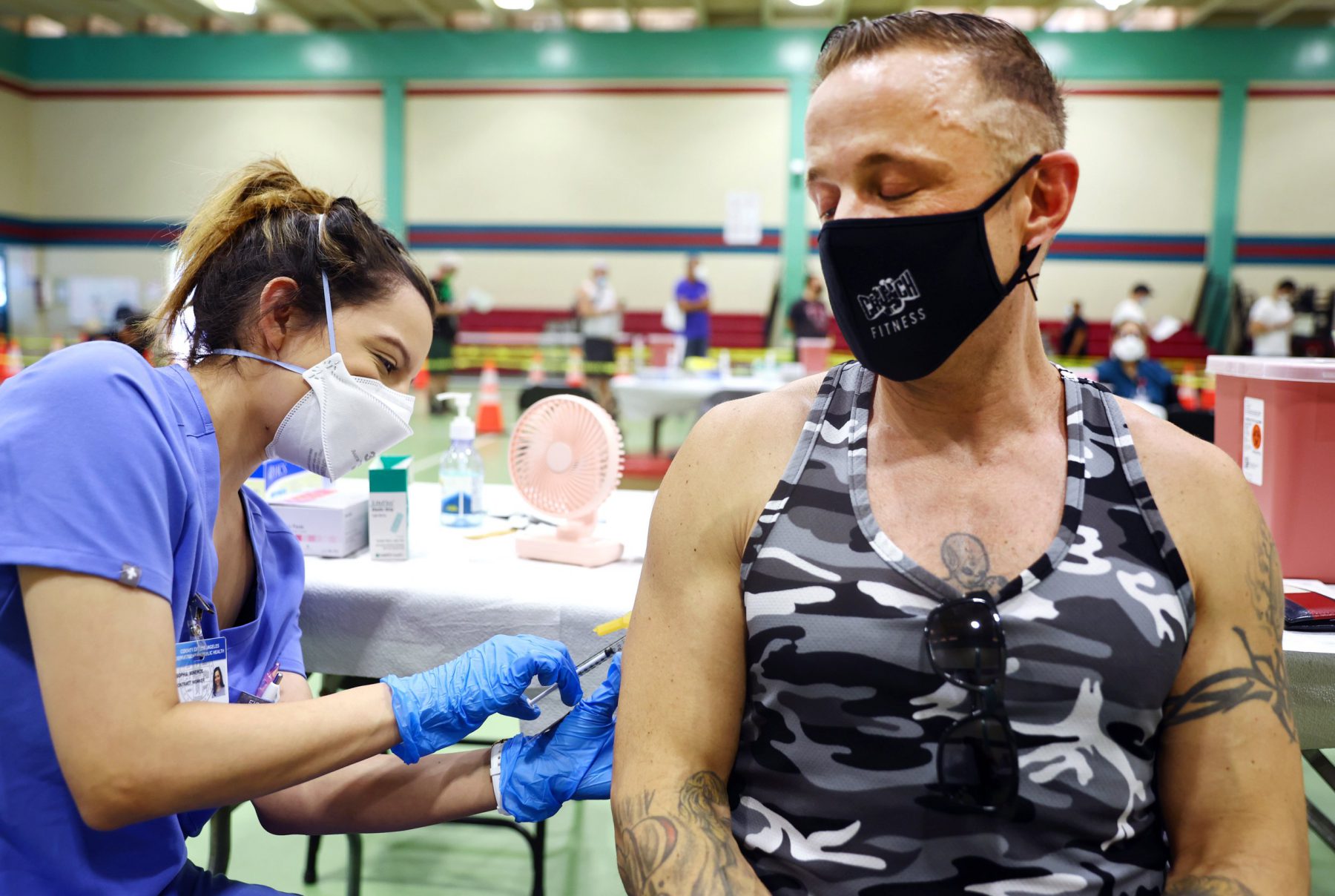
Coming on the heels of the Covid-19 pandemic, monkeypox has primed the anxieties of an already anxious public. But monkeypox is not Covid, both in how it spreads and whom it tends to affect.
Monkeypox is overwhelmingly occurring in one population: gay, bisexual and other men who have sex with men, a cohort known as GBMSM. Consequently, it is important for journalists to make clear this distinction and report on the outbreak with extra sensitivity, given the long history of stigma, discrimination and violence this population has faced.
Journalists must take great care to study the relevant scientific data, to interview experts as well as people with the virus and to communicate precise details about the outbreak. As journalists, our goals are to provide information the public can use to mitigate risk of infection and paint those impacted by the virus with humanity.
Below are four important points for journalists to keep in mind when reporting on monkeypox.
Be clear, careful and precise with your word choice
Monkeypox is overwhelmingly transmitted during sex between men, and research suggests that oral and anal intercourse may be the predominant conduit of transmission. Typically, 90% to 100% of those infected are members of the GBMSM population, according to the World Health Organization, CDC and many other peer-reviewed sources.
While exceptions to the rule are certainly newsworthy — for example, individual cases in children — it’s vital to keep reminding readers that this outbreak, at least currently, is largely occurring in a single demographic. That means not just referring to statistics, which don’t lodge into people’s brains as successfully as narratives do, but putting a human face on this outbreak and telling the stories of GBMSM with the virus.
When covering that community, it is important to choose words carefully so as not to further any anti-LGBTQ bias or stigma. When writing about sexual behaviors, choose dispassionate, clinical and precise language that does not carry a moral weight. And when specifically discussing the transmission of monkeypox, focus on the particular behaviors that facilitate that transmission — anal and oral sex, and having a high frequency of sexual partners — rather than, say, the sexual orientation or other identity-related factors of the people in question.
Terms to use:
- Gay, bisexual and other men who have sex with men (GBMSM); or simply men who have sex with men (MSM). These are preferred terms in the public health arena because they are inclusive of men who do not identify as gay or bisexual but who have sex with men. It’s fine, and in many cases preferable, though, to describe a person or group as gay or bisexual if they do indeed identify that way. Some in the African American community prefer the term “same-gender loving,” or SGL.
- Sex between men
- Sex with multiple partners, sex with new partners
- Anal sex or anal intercourse. While many people are squeamish about using these terms, it’s important to do so, because science suggests anal sex is the predominant conduit of monkeypox transmission.
- A person with monkeypox “has the virus,” “contracted monkeypox” or “acquired the virus.” These constructions — as opposed to, for example, “monkeypox victim” or “monkeypox patient” — don’t define an individual based on the virus and use “person-centered” language.
Words to avoid:
- Promiscuous, casual sex, anonymous sex. These terms imply judgment of the behavior.
- Risky sex, risk behaviors. The public health world also frowns on describing people or groups as “risky” because it often bears a negative connotation.
- Unsafe sex. These days, pills can prevent HIV transmission, so this term is both too vague and has a judgmental tone.
- Infected with monkeypox, monkeypox patient, monkeypox victim. These constructions have long been frowned upon in the HIV community for fueling stigma and primarily describing an individual based on a virus.
Turn math and statistics into narrative
When writing about infectious disease, it’s important to think mathematically. Journalists often get tripped up when covering factors associated with the transmission of a virus. They fail to make clear how different factors are associated with different degrees of risk.
Take the phrase “anyone can get monkeypox.” This expression, which public health authorities often use and which journalists are wont to parrot, is accurate on its surface; anyone exposed to the virus can theoretically contract it. But the term is highly misleading because it reduces infectious-disease statistics to an overly simplistic binary equation.
The more important questions are:
- How likely is someone to be exposed to monkeypox?
- If someone is exposed, what behaviors are associated with contracting the virus?
- Where on a continuum from very unlikely to highly likely to transmit the virus do each of those behaviors fall
- How certain can we be, and what scientific evidence backs each of these conclusions?
So, for example, it is much more accurate and scientifically precise to write:
According to numerous studies and public health reports, gay, bisexual and other men who have sex with men are vastly more likely to be exposed to monkeypox than other groups — including women and children, among whom there have not been sustained chains of transmission, the World Health Organization reports.
Considerable scientific evidence from peer-reviewed papers as well as public health reports from around the world indicate that sexual activity, including oral and anal intercourse, poses the highest risk of transmission. Other factors associated with a risk of transmission, albeit a much lower level than sexual contact, include nonsexual close contact such as hugging, as well as touching unwashed sheets, towels, bedding or clothing that have been exposed to infected lesions. Public health experts do not believe that aerosol transmission is a substantial factor driving this outbreak.
Look for the most up-to-date, multisourced data
When communicating about the contours and drivers of the monkeypox outbreak, follow a data-driven approach that relies on multiple sources. Such sources can include reports from national, regional and global health authorities, as well as peer-reviewed published papers diagramming the monkeypox outbreak. New data is always emerging, so make sure your sources are as current as possible.
These sources can have significant shortcomings. In particular, thanks to the lack of a nationalized health-care system in the United States, the CDC’s data is woefully thin compared with those that other health authorities publish. (The CDC does update national and global monkeypox case counts each weekday.)
You can, however, seek to draw inferences about the U.S. outbreak from epidemiological patterns documented elsewhere in the world. For example, check out the latest reports from the European Centre for Disease Prevention and Control, WHO, UK Health Security Agency and Spain’s Health Ministry. For information on the U.S. distribution of the Jynneos vaccine, visit the website of U.S. Administration for Strategic Preparedness and Response.
When seeking commentary from experts, look for professionals who have actual experience working with monkeypox, such as the authors of studies about the virus or public health officials. However, listen to them with a critical ear. While well-intended, public health officials may not always be as clear, direct and accurate about the specific details of the outbreak as you would like.
Provide prevention tips that align with risk levels
During the early weeks of the monkeypox outbreak, mixed messaging from public health departments on prevailing trends left people confused about who was most at risk and how those at risk can protect themselves.
Because sexual contact, and quite possibly intercourse itself, is the main way monkeypox transmits, public health officials have recommended that GBMSM members refrain from group sex or attending sex-on-site venues such as bathhouses, practice monogamy or establish “sex pods” akin to “Covid pods,” or at least reduce the number of sexual partners.
The two-dose Jynneos vaccine, research suggests, also reduces the risk of monkeypox infection by about 85%. (Maximum protection, however, is not achieved until two weeks after the second dose, with the two doses spaced at least four weeks apart, according to the CDC and Food and Drug Administration.)
There have been rare cases of transmission of the virus through nonsexual close contact, perhaps through hugging, so people with symptoms should avoid such physical contact. And because of the small chance of transmission through clothing, bedding or towels that have touched monkeypox lesions, these fabrics should be carefully washed.
Overall, when providing monkeypox-prevention tips, consider what any suggestions might imply about how risky one behavior is compared with another. For example, providing tips about how to mitigate monkeypox risk among children may suggest that there is a substantial likelihood of children contracting the virus. In fact, cases among children remain rare worldwide — only 0.2% of U.S. cases are among children younger than 16, according to a recent CDC report — and the WHO reports that there have been no confirmed cases of transmission within schools.
Reporting on such a sensitive subject as an infectious disease — especially when the science is quickly evolving and the virus impacts a stigmatized population — can be a difficult needle to thread. Above all, report on the monkeypox outbreak from a place of compassion, guided by the stories of those impacted by the virus and always with an eye toward the truth.


